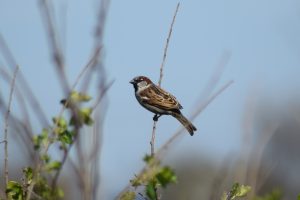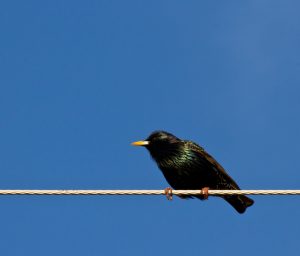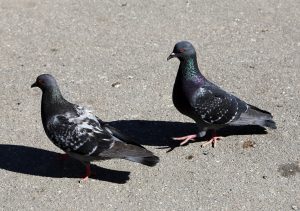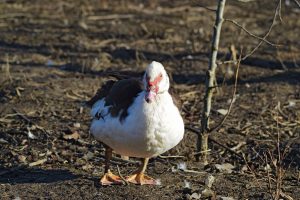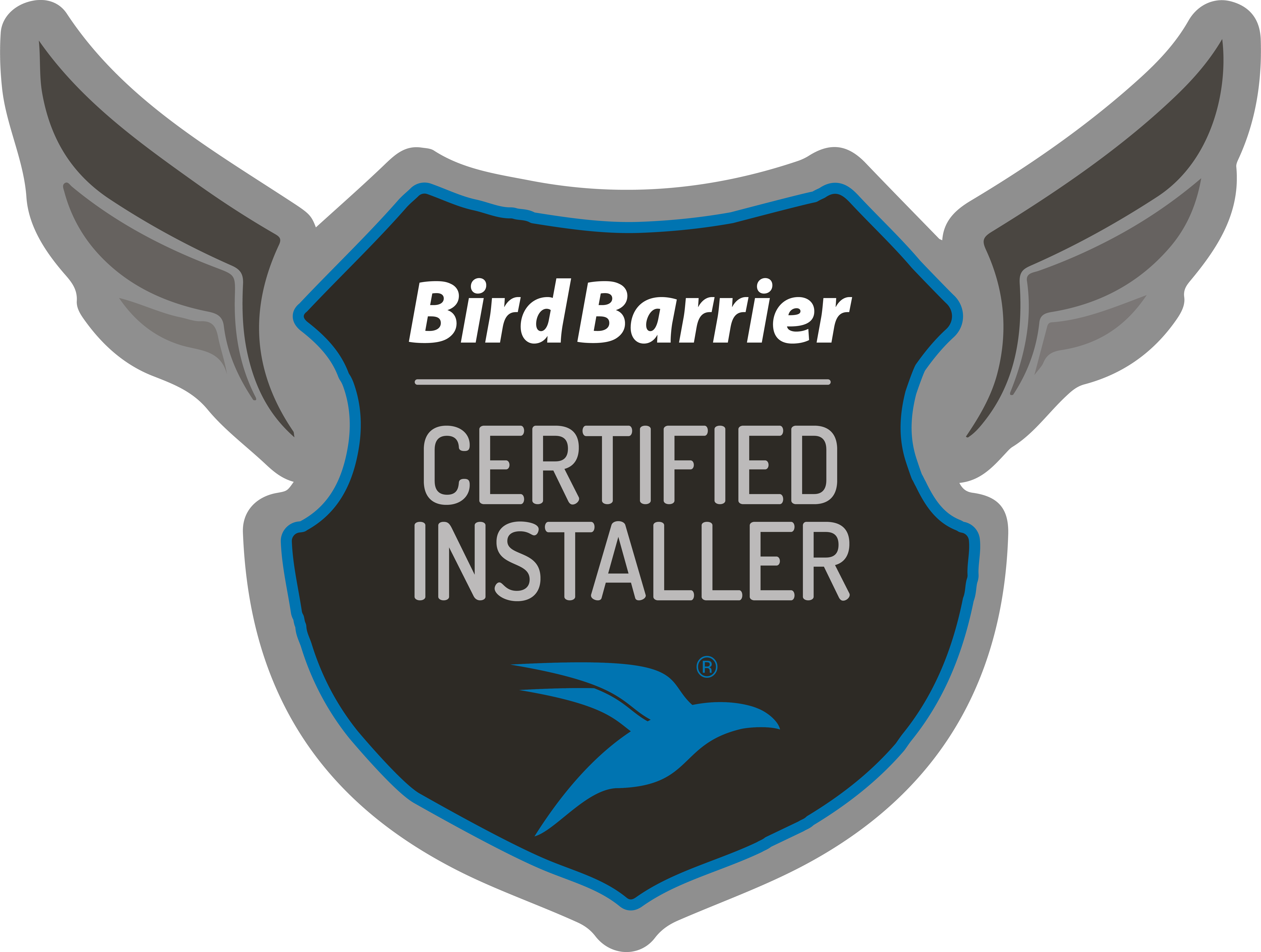Non-native birds like house sparrows, European starlings, and pigeons usually nest in, on, and around houses. These birds can be a nuisance, leading to nests that block everything from your home’s dryer ducts to the gutters. Their droppings are corrosive and can damage buildings. Other non-native species, such as Muscovy ducks and Egyptian geese, are commonly found around waterways. These waterfowl reproduce quickly, and their droppings will deface and cause significant damage to community property. Bird infestations can also transmit parasites and diseases.
Common Bird Appearances
Each of these birds has a distinct appearance:
House Sparrow
These birds have chunky bodies with large, round heads. The males are brightly colored and have gray heads, white cheeks, and a black bib. The females usually have a brown body with some gray-brown features.
European Starling
Similar to sparrows, starlings have stout bodies with short tails. In the summer, they have purplish-green feathers with yellow beaks, and in the winter, they turn brown with white spots.
Pigeon
The common pigeons have large, plump bodies with small heads. Their color can vary, but they often have bluish-gray plumage with black on the wing and tail.
Muscovy Duck
This large duck species is easily identified by their mottled appearance, with prominent pink fleshy bumps around the beak and face. The males are noticeably larger than the females. These ducks will nest year-round, under bushes and in tall grass. Unlike most ducks, they cannot quack, but are capable of hissing.
Egyptian Geese
These birds are stout with an upright stance, a long neck, and long pink legs. Their plumage is pale gray, with a brown back and a dark chestnut patch on the breast. The plumage is similar between males and females, with males being a bit larger and having a thicker neck.
They frequent places near large bodies of water, like wetlands, reservoirs, and golf courses. They’ll nest on the ground, at riverbanks, in tree cavities, on building ledges, and even in old nests of other large birds. Both sexes will hiss when threatened. The timing of breeding depends on the region, often late winter into spring in temperate areas.
Native vs. Non-Native Bird Species
Birds are classified into native and non-native categories. Native birds form an integral part of local ecosystems. They create natural pest control and help pollination, forest regeneration, and more. A non-native bird may have a role in its natural ecosystem, but when it’s out of its habitat, it can be destructive to natural patterns, outcompete native species, and spread the seeds of invasive plants.
What Is the Migratory Bird Treaty Act?
To keep native bird populations in North America healthy and intact, the U.S. entered into the Migratory Bird Treaty Act of 1918. This act has a list of federally protected migratory birds that are illegal to remove, harm, or disturb — including active nests, eggs, or young birds.
It prohibits killing, capturing, selling, trading, and transporting protected birds without prior authorization by the Department of the Interior, U.S. Fish and Wildlife Service. Having any part of these birds, such as a feather, in your possession is illegal, even if it was naturally dropped.
Violations can result in federal fines and even imprisonment for up to two years. This is why it’s always best to hire a professional, such as Urban Jungle Wildlife Removal, to remove birds. We know the regulations and can identify which birds can be legally removed.
What Birds Are Protected Under This Act?
The following commonly found birds that people want removed are protected under this act:
Barn Swallows
Nesting throughout spring and summer, protected barn swallows are small and sleek with long, deeply forked tail streamers and pointed wings. Their plumage is glossy with blue upperparts and a reddish brown forehead with a narrow dark blue collar. Look for small white spots on the tail when they’re in flight. Plumage is similar between males and females, and they typically nest in cup-shaped mud nests stuck to vertical surfaces or under protective overhangs. They will often build their nests above covered walkways and patios.
Chimney Swifts
Chimney swifts are protected. They’re medium-sized and a sooty gray color with a darker body and pale throat. They have a body shaped like a cigar and long, sickle-shaped wings. Males and females are indistinguishable from each other on sight. You’ll find them in masonry chimneys, silos, and flues with nests made out of dry twigs. They appear in the late spring or summer in the U.S. They will also occasionally nest in covered walkways, similar to barn swallows
What Does a Bird Eat?
Birds will feed on a variety of berries, grains, and seeds. They also eat small insects, earthworms, or even snails. Bird feeders with cracked corn, wheat, or millet will readily attract birds to your yard.
If there is a lack of food, some will turn to discarded scraps around restaurants or in your trash cans.
Bird Behavior
Depending on the type of bird, they live anywhere from rural areas to inner cities. When nesting season begins, usually in the spring, they’ll start searching for a sheltered spot that has access to food and water. If it’s warm and safe from predators, they’ll start building a nest.
When birds gather in one spot for feeding or nesting, droppings can quickly accumulate. When this happens, the histoplasmosis fungus can grow in the soil and then create airborne spores you can breathe. This can then put exposed individuals at risk for respiratory disease.
Sounds
Listen to the sounds of a European Starling fledgling:
Signs You Have a Bird Infestation
There are several telltale signs you might have a bird infestation, such as:
- More birds around your property.
- Large quantities of bird droppings.
- Nests in crevices or areas like your dryer, stove or exhaust fan vents.
- A foul scent around your home.
- Missing nest materials strewn around your property.
Your Bird Removal Solution 
Whether you are dealing with starlings and sparrows in a vent, pigeons in your roof, or Muscovy ducks in the community pond, the Bird Barrier-certified team at Urban Jungle can help. Along with removal and trapping, our bird exclusion services are a great way to prevent future issues for a variety of bird species. We also offer cleanup and sanitation services to tackle any mess left behind. Contact us today to get started.
Call Now for Wildlife Removal Services➔

